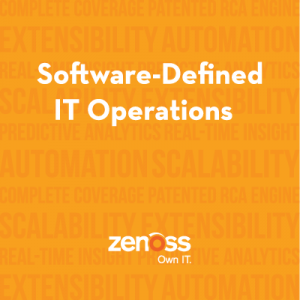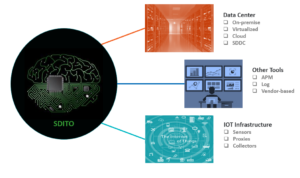
Relief for IT Operations
For many years, the IT industry has been discussing approaches that will relieve the burden on IT operations management (ITOM) teams or at least allow them to stay on par with the expectations/implementation equation. Alongside the very ideas that make software-defined data centers (SDDC) a reality, the notion of intelligent software to manage the entire application and infrastructure stack has emerged. Making this nirvana a reality is where Software-Defined IT Operations (SDITO) comes in; it’s the enabler of the journey to a fully automated, lights-out data center. SDITO provides the glue to take inputs from any source, regardless of the location, and apply adaptive machine learned algorithms to avoid service disruptions across the entire IT infrastructure.
The Road to Software-Defined IT Operations
The road to SDITO often starts with unifying tools such that data from various sources can be analyzed in the context of every other stream. The input streams can range from more traditional data centers to IoT infrastructure to integrations with other tools such as log and APM. Once data streams are combined, SDITO utilizes predictive capabilities to minimize outages based on intelligent learning sourced from machine-based findings decorated with human-influenced tweaks. Over time, policies become smarter, which decreases the need for human influence and allows operators to focus on higher-level tasks.
The path to SDITO raises some challenging questions every CIO and IT operations director should be pondering as they make ITOM investments:
1. Does the vendor have a vision for SDITO, and is the solution future-proof?
2. Is the IT operations team prepared to manage the complexity and size of an SDITO engine?
3. Will a closed on-premises solution deliver state of the art in security, adaptability and scalability?
Upcoming posts will address the inner workings of SDITO in greater detail and also reveal recipes for integrating Zenoss into a holistic SDITO stack.










